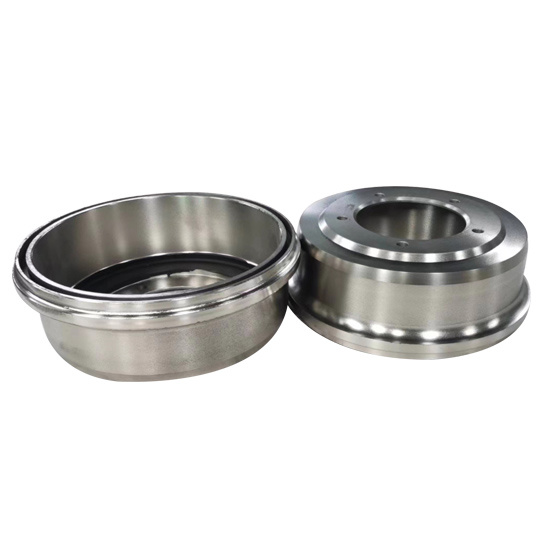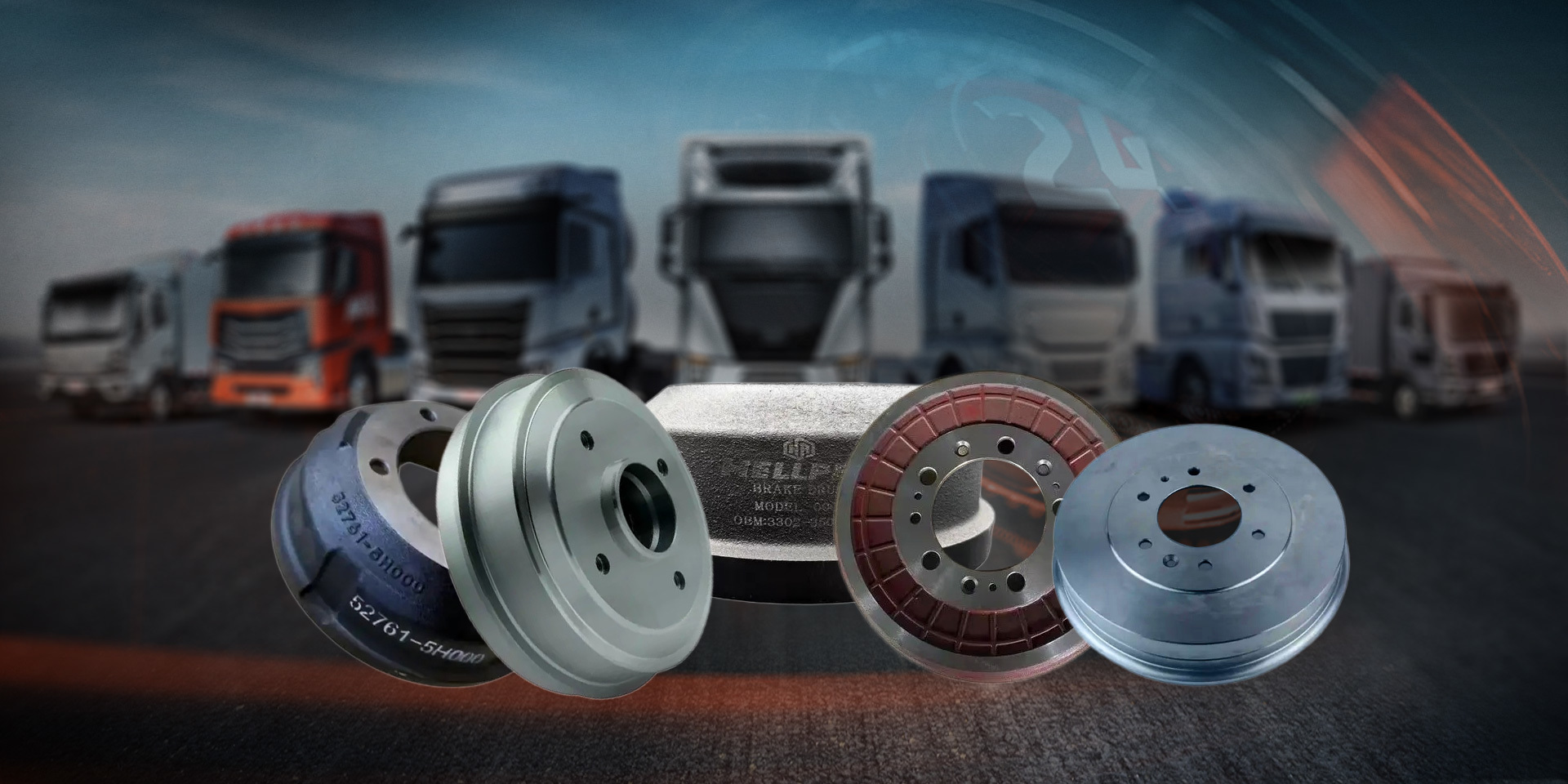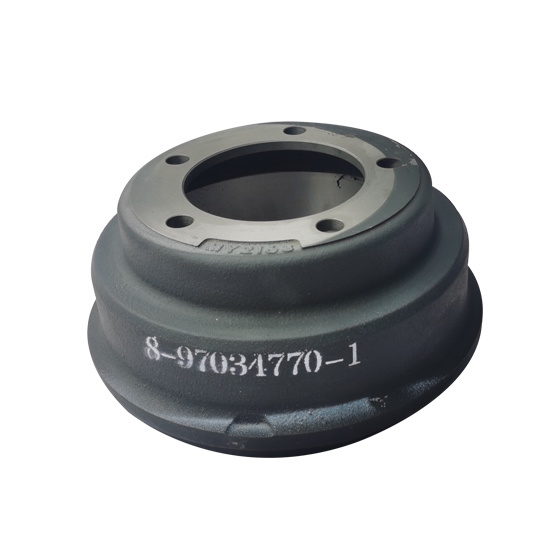The Anatomy of a Brake Drum: Understanding Its Components for Optimal Vehicle Safety
Release time:
10 Aug,2025
The Anatomy of a Brake Drum: Understanding Its Components for Optimal Vehicle Safety Table of Contents 1. Introduction to Brake Drums 2. Importance of Brake Drums in Vehicle Safety 3. Key Components of a Brake Drum 3.1 The Brake Drum 3.2 Brake Shoes 3.3 Springs and Their Functions 3.4 Wheel Cylinder 4. How Brake Dru

The Anatomy of a Brake Drum: Understanding Its Components for Optimal Vehicle Safety
Table of Contents
- 1. Introduction to Brake Drums
- 2. Importance of Brake Drums in Vehicle Safety
- 3. Key Components of a Brake Drum
- 4. How Brake Drums Work
- 5. Maintenance Tips for Brake Drums
- 6. Common Issues and Troubleshooting Brake Drums
- 7. Proper Installation Techniques
- 8. Conclusion
- 9. FAQs about Brake Drums
1. Introduction to Brake Drums
Brake drums are an essential component of a vehicle's braking system, primarily found in rear drum brakes. Understanding the brake drum's anatomy is crucial for anyone interested in automotive repair, safety, and performance. Brake drums convert kinetic energy into thermal energy, providing the necessary force to slow down or stop a vehicle. This article delves into the various components of a brake drum, their functions, and maintenance tips to ensure optimal performance.
2. Importance of Brake Drums in Vehicle Safety
The **importance of brake drums** cannot be overstated. They play a vital role in ensuring safe vehicle operation. The efficiency of the braking system directly impacts a driver's ability to respond to emergencies and navigate hazardous conditions. A well-maintained brake drum contributes significantly to overall vehicle safety, enhancing performance and reliability. Regular inspections and understanding their components can prevent brake failure, which can lead to accidents.
3. Key Components of a Brake Drum
To truly appreciate the brake drum's role in vehicle safety, we must examine its key components. Each part contributes to the drum's functionality, creating a cohesive system that ensures effective braking.
3.1 The Brake Drum
The **brake drum** itself is a cylindrical component that houses the brake shoes. Typically made from cast iron or aluminum, the drum's inner surface is designed with a smooth finish to facilitate effective contact with the brake shoes. This contact generates friction, which slows down the vehicle. The outer surface of the drum may also be designed to dissipate heat, helping to maintain optimal brake performance.
3.2 Brake Shoes
**Brake shoes** are curved components that press against the inner surface of the brake drum when the brakes are engaged. Made from friction material, they are designed to withstand high levels of heat and wear. When the brake pedal is pressed, hydraulic pressure pushes the brake shoes outward, causing them to make contact with the drum and generate the necessary friction to slow the vehicle.
3.3 Springs and Their Functions
**Springs** play a crucial role in the operation of brake drums. They are responsible for returning the brake shoes to their original position after the brakes are released. This ensures that the shoes do not remain in contact with the drum, preventing unnecessary wear. Additionally, springs help maintain the correct positioning of the brake shoes, allowing for consistent braking performance.
3.4 Wheel Cylinder
The **wheel cylinder** is a hydraulic component located within the drum brake assembly. When hydraulic fluid is applied, the wheel cylinder pushes the brake shoes outward against the drum. This activation creates the required friction to slow down or stop the vehicle. Understanding the function of the wheel cylinder is essential, as any issues with this component can lead to brake failure.
4. How Brake Drums Work
The operation of brake drums hinges on the principles of hydraulics and friction. When the driver presses the brake pedal, hydraulic fluid is transferred from the master cylinder through the brake lines to the wheel cylinder. This fluid pressure causes the wheel cylinder to expand, pushing the brake shoes outward against the spinning brake drum.
As the brake shoes make contact with the drum, friction is generated, converting kinetic energy into heat. This heat dissipates through the drum, which is designed to handle high temperatures. The frictional force slows the vehicle down until it comes to a complete stop.
Understanding this process is vital for anyone involved in automotive maintenance, as it emphasizes the importance of each component working together seamlessly to ensure effective braking.
5. Maintenance Tips for Brake Drums
Regular maintenance of brake drums is essential for ensuring safety and performance. Here are some practical tips to keep your brake drums in optimal condition:
1. **Inspect Regularly**: Check brake drums for signs of wear, cracks, or warping. Regular inspections can identify potential issues before they escalate.
2. **Replace Brake Shoes**: Ensure that brake shoes are replaced when they show signs of wear. Worn shoes can lead to reduced braking efficiency and potential damage to the drum.
3. **Clean the Brake Assembly**: Dirt and debris can accumulate in the brake assembly, affecting performance. Regular cleaning ensures that components operate smoothly.
4. **Check Hydraulic Fluid Levels**: Low hydraulic fluid levels can lead to inadequate braking performance. Regularly check and replace fluid as necessary.
5. **Consult Professionals**: If you notice any unusual noises or performance issues, consult a professional mechanic for a thorough inspection and repair.
6. Common Issues and Troubleshooting Brake Drums
Brake drums can experience various issues that affect their performance. Here are some common problems and troubleshooting tips:
1. **Squeaking or Grinding Noises**: This may indicate worn brake shoes or debris trapped in the brake assembly. Inspect and clean as needed.
2. **Vibrations When Braking**: This could be a sign of a warped brake drum. Check the drum for warping and consider resurfacing or replacing it.
3. **Brake Drums Overheating**: Excessive heat can lead to brake fade and reduced performance. Ensure that the brake components are in good condition and that the system is not overloaded.
4. **Leaking Brake Fluid**: This indicates a failure in the hydraulic system, typically from the wheel cylinder. Inspect and replace any faulty components.
By being proactive in identifying and addressing these issues, drivers can significantly improve their vehicle's braking performance and safety.
7. Proper Installation Techniques
Ensuring correct installation of brake drums is critical for optimal performance. Follow these steps for a successful installation:
1. **Prepare the Vehicle**: Ensure the vehicle is on a flat surface and secure it with wheel chocks. Raise the vehicle and support it with jack stands.
2. **Remove the Old Drum**: Disconnect the wheel cylinder and remove the old brake drum carefully. Take note of how components are arranged for reassembly.
3. **Inspect Components**: Before installing the new drum, inspect brake shoes, springs, and the wheel cylinder for wear or damage.
4. **Install New Brake Drum**: Place the new brake drum onto the hub and secure it according to the manufacturer’s specifications.
5. **Reassemble the Brake System**: Reattach all components, ensuring that springs and shoes are properly positioned.
6. **Test the Brake System**: Before driving, pump the brake pedal several times to ensure proper engagement and performance.
Proper installation techniques can enhance braking efficiency, contributing to overall vehicle safety.
8. Conclusion
Understanding the anatomy of a brake drum and its components is essential for maintaining safe and effective vehicle operation. From the brake drum itself to the brake shoes, springs, and wheel cylinder, each component plays a vital role in the braking process. Regular maintenance and inspection are crucial to prevent issues that could compromise vehicle safety. By following the guidelines outlined in this article, automotive enthusiasts and professionals can ensure that their brake systems function optimally, contributing to safer driving experiences.
9. FAQs about Brake Drums
1. How often should brake drums be inspected?
Regular inspections should be conducted at least every 12,000 miles or as specified in your vehicle's maintenance schedule.
2. What are the signs of worn brake shoes?
Signs include squeaking or grinding noises, decreased braking performance, or the brake warning light illuminating on the dashboard.
3. Can I replace brake drums myself?
Yes, if you have the necessary tools and knowledge. However, it's recommended to consult a professional if you're unsure.
4. How do I know if my brake drums need to be replaced?
If you notice deep grooves, cracks, or warping on the drum, it’s time for a replacement.
5. What is the typical lifespan of brake drums?
Brake drums can last between 30,000 to 70,000 miles, depending on driving conditions and maintenance practices.
By comprehensively understanding brake drums and their components, drivers can make informed decisions about maintenance and repairs, thereby enhancing their safety on the road.
Tag:
Previous Page
All
- All
- Product Management
- News
- Introduction
- Enterprise outlets
- FAQ
- Enterprise Video
- Enterprise Atlas
RELATED INFORMATION












